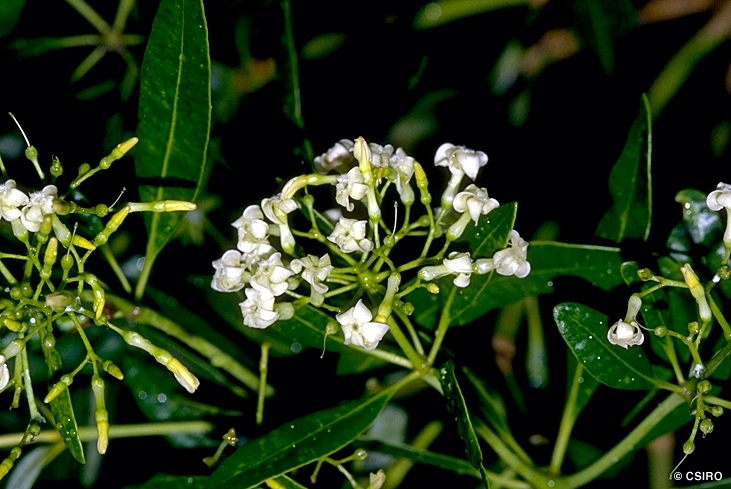Australian Tropical Rainforest Plants - Online edition
Alstonia actinophylla (A.Cunn.) K.Schum.




Schumann, K.M. (1895) Die Naturlichen Pflanzenfamilien 4(2): 138.
Milkwood; Cape Milkwood; Milkwood, Northern Territory; Northern Territory Milkwood; White Cheesewood; Milkwood, Cape
Bark exudate rapid and copious. Dead bark rather corky, pale yellowish brown on the surface.
Twigs and petioles produce a milky exudate. Leaves in whorls of 3-7. Intramarginal vein difficult to distinguish because of its proximity to the margin. Leaf blades about 5-12 x 0.5-2.5 cm, petioles about 0.5-0.7 cm long. Lateral veins about 23-45 on each side of the midrib.
Cotyledons ovate, about 7-9 x 3-4 mm. First pair of leaves ovate, about 10-13 x 5-7 mm, margins smooth, glabrous. At the tenth leaf stage: leaves much paler on the underside. Plant entirely glabrous. Seed germination time 12 to 27 days.
Widespread in WA, NT and CYP, extending to NEQ about as far south as Rossville on the rain forest margin, but extending further south in inland areas. Altitudinal range from near sea level to about 600 m. Usually grows in open forest but also found in monsoon forest and on rain forest margins. This tree can tolerate fires as the stem is protected by a thick layer of corky bark. Also occurs in New Guinea.
Apical dominance is maintained by one of two strategies: each internode is terminated by a whorl of three or more branches. Sometimes a bud on the upper surface of one of the branches in the terminal whorl becomes active and produces a vertical shoot which them becomes the mainstem. Usually, however, buds on the mainstem (below the terminal whorl of branches) become active and produce about three vertical shoots of which one becomes the mainstem.





